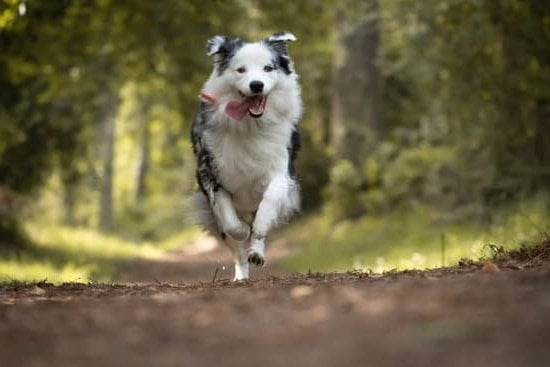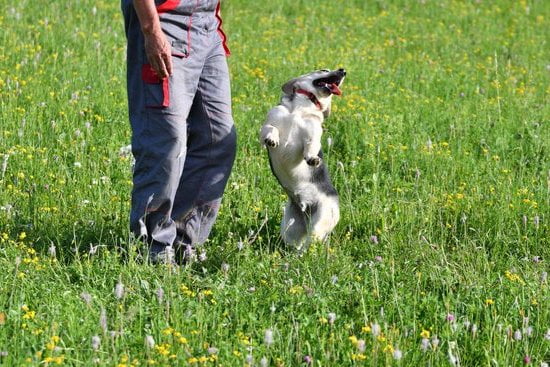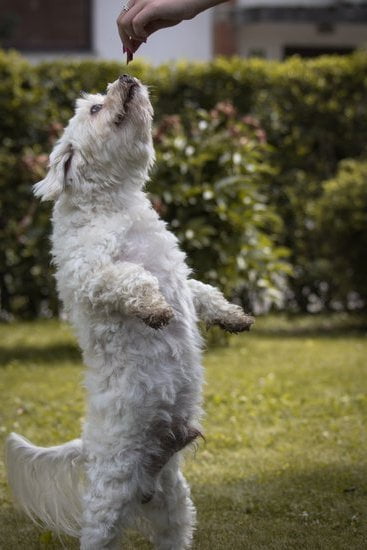Have you ever wondered how to train a dog to take a treat gently? Training your furry friend to take a treat gently is not just about preventing your fingers from getting nipped – it’s also an important aspect of teaching your dog self-control and good manners. In this article, we’ll explore the process of training a dog to take a treat gently, covering everything from choosing the right treats to troubleshooting common challenges.
When it comes to training a dog, it’s essential to start with the basics. Choosing the right treats for training is crucial, as well as creating the right environment for effective learning. We’ll walk you through each step of the process, so you can confidently teach your dog to take a treat gently without any hassle.
Additionally, we’ll discuss some common mistakes to avoid during training and provide tips on reinforcement strategies for consistent gentle treat-taking behavior. Beyond just using treats, we’ll also explore how positive reinforcement can be applied in everyday situations. So, if you’re ready to embark on this journey of training your furry friend, keep reading for valuable insights and practical tips.
The Basics
When training a dog to take a treat gently, it is important to start with the basics by choosing the right treats for training. The type of treat you use can greatly impact the success of your training sessions. Here are some important factors to consider when selecting treats for your dog:
- Size: Choose treats that are small and easily manageable for your dog. This will make it easier for them to take the treat gently without grabbing or lunging.
- Texture: Opt for soft, chewy treats that can be easily broken into smaller pieces. This allows you to provide multiple rewards during a single training session without overfeeding your dog.
- Taste: Look for treats that your dog absolutely loves. The more enticing the treat, the more motivated your dog will be to learn and practice gentle treat-taking behavior.
Additionally, consider any dietary restrictions or allergies your dog may have when selecting treats. It’s important to choose treats that are not only delicious but also safe and suitable for your furry friend. By taking these factors into account, you can set the stage for successful and effective training sessions.
In addition to store-bought treats, you can also use natural, healthy alternatives such as fruits and vegetables (e.g. carrots, apple slices) as rewards during training. Experiment with different options to determine which treats work best for your dog and keep them engaged in the training process.
Setting the Stage
Creating the right environment for training your dog to take a treat gently is crucial for successful and effective training. The first step in setting the stage is to choose a quiet and familiar area for training. This could be a specific room in your home or a spot in your yard where there are minimal distractions. Ensuring that the environment is calm and free from noise or other animals will help your dog focus during training sessions.
Another important aspect of creating the right environment is timing. Choose a time when your dog is relaxed, such as after exercise or playtime, but not so tired that they are disinterested. It’s also essential to consider your own state of mind during training – make sure you’re calm and patient, as dogs can easily pick up on human emotions.
Additionally, having the right tools on hand is crucial for creating an ideal training environment. Keep a pouch with treats within easy reach, as well as any necessary training aids such as clickers or toys. These tools will help reinforce positive behavior and create a structured learning experience for your dog.
| Key Considerations | Details |
|---|---|
| Environment | Choose a quiet and familiar area for training with minimal distractions. |
| Timing | Select a time when your dog is relaxed and not too tired, ensuring you are calm and patient as well. |
| Training Tools | Keep treats, clickers, toys, or other aids handy to facilitate positive reinforcement. |
By establishing the right environment for training, you’ll create an atmosphere that encourages focus and learning in your dog. With patience and consistency in this setting, you’ll be well on your way to successfully teaching your furry friend to take treats gently.
Step-by-Step
Teaching a dog to take a treat gently is an essential part of their training. This process helps prevent the dog from becoming too aggressive when taking food and improves their overall behavior and obedience. The key to successful training lies in understanding the importance of teaching this behavior, as well as utilizing the right techniques and consistency.
The first step in teaching a dog to take a treat gently is to make sure you have the right treats for training. Choose soft, bite-sized treats that are easy for the dog to consume quickly. Avoid hard or large treats that may encourage the dog to snap or grab at the treat aggressively.
Once you have chosen the right treats, it’s important to set the stage for training by creating a calm and controlled environment. Minimize distractions and find a quiet space where you can focus on the training without interruptions. This will help your dog stay focused and engaged during the learning process.
| Training Process Step | Description |
|---|---|
| Choose appropriate treats | Soft, bite-sized treats are best for training |
| Create a calm environment | Minimize distractions and find a quiet space for training |
Common Mistakes to Avoid
When training a dog to take a treat gently, it’s important to be aware of common mistakes that can hinder the process. Avoiding these pitfalls will help ensure a successful and positive training experience for both you and your furry friend. Here are some common mistakes to watch out for during training:
- Rushing the process: It’s important to be patient when teaching your dog to take a treat gently. Rushing the process can cause confusion and frustration for your dog, leading to undesirable behavior.
- Using the wrong type of treat: Not all treats are suitable for training, especially when it comes to teaching a dog to take a treat gently. Choosing treats that are too big or hard can make it difficult for your dog to eat them gently.
- Reprimanding rough behavior: If your dog takes a treat roughly, avoid scolding or reprimanding them. This can create negative associations with taking treats and may even lead to fear or anxiety.
Being mindful of these common mistakes will help you navigate the training process more effectively, leading to better results in teaching your dog to take a treat gently. By avoiding these pitfalls, you’ll create a positive and encouraging learning environment for your canine companion.
Troubleshooting
Identifying the Issue
When training a dog to take a treat gently, it’s common to encounter challenges along the way. One of the first steps in troubleshooting is identifying the specific issue at hand. Is your dog lunging for the treat? Snapping or biting your hand? Refusing to take the treat at all? Each of these behaviors requires a different approach, so it’s important to pinpoint exactly what the problem is before proceeding with troubleshooting.
Adjusting Your Technique
If your dog is displaying any of the aforementioned behaviors, it may be necessary to adjust your technique. For example, if your dog is snatching treats from your hand, try using a closed fist instead to prevent them from grabbing at it.
If they are refusing to take the treat, you may need to go back a step and reinforce the basic “take it gently” command before moving forward again. It’s essential to remain patient and consistent while making these adjustments.
Seeking Professional Help
In some cases, troubleshooting on your own may not be enough to overcome training challenges. If you find that you are consistently struggling with a particular issue, don’t hesitate to seek help from a professional dog trainer.
They can provide personalized advice and guidance based on your dog’s specific behavior and temperament. Remember that every dog is unique, and what works for one may not work for another, so having an expert assess the situation can be incredibly valuable in resolving training challenges.
Reinforcement
Positive Reinforcement
Once your dog has mastered the art of taking a treat gently, it’s important to continue reinforcing this behavior through positive reinforcement. This means providing a reward or praise every time they successfully take a treat without being too rough. Whether it’s a verbal “good boy/girl” or a gentle petting, positive reinforcement helps to solidify the desired behavior in your dog.
Consistency Is Key
Consistency is crucial when it comes to ensuring consistent gentle treat-taking behavior in your dog. Be sure to maintain the same expectations and standards each time you give your dog a treat. If they start to revert back to their old ways of snatching treats or biting down too hard, gently remind them of the proper behavior and require them to try again before giving them the treat.
Practice Makes Perfect
Repetition is essential for reinforcing gentle treat-taking behavior. Make use of regular training sessions where you can practice this skill with your dog on a consistent basis. By incorporating gentle treat-taking into their daily routine, you can help them understand that this behavior is expected each time they are given a treat. The more opportunities they have to practice, the more likely they are to consistently exhibit gentle treat-taking behavior.
Beyond Treats
Positive reinforcement is a key component in training a dog to take treats gently, but it can also be utilized in various everyday situations to encourage good behavior. Beyond just using treats during specific training sessions, positive reinforcement involves the use of praise, affection, and rewards to reinforce desired behaviors. By incorporating positive reinforcement into everyday interactions with your dog, you can establish and maintain good behavior in a variety of contexts.
In addition to using treats as positive reinforcement during training sessions, it’s important to praise and reward your dog for exhibiting gentle behavior in other situations. For example, when your dog greets visitors calmly or refrains from jumping on furniture, be sure to offer verbal praise or affectionate pats as a form of positive reinforcement. Consistently acknowledging and rewarding gentle behavior will encourage your dog to continue displaying these desirable actions.
Furthermore, positive reinforcement can be used to promote good behavior during activities such as grooming, nail trimming, and vet visits. By associating these experiences with positive rewards such as treats or affectionate praise, you can help your dog feel more comfortable and cooperative in various day-to-day scenarios. This not only facilitates a more pleasant experience for both you and your pet but also reinforces the idea that calm and gentle behavior is consistently rewarded.
Conclusion
In conclusion, training a dog to take a treat gently is an important skill that not only prevents accidents but also strengthens the bond between the owner and the pet. By following the steps outlined in this article, owners can successfully teach their dogs to exhibit gentle behavior when receiving treats.
It is essential to acknowledge and celebrate the successes achieved during the training process. Each small victory should be recognized, as it encourages both the dog and the owner to continue their efforts.
Beyond just taking treats gently, positive reinforcement techniques can be applied to other aspects of a dog’s behavior in everyday situations. By consistently rewarding good behavior with praise, attention, or additional treats, owners can maintain and reinforce positive habits in their dogs. This creates a harmonious relationship based on trust and mutual understanding.
As with any training process, patience is key. Owners should be prepared for challenges along the way and should approach these hurdles with determination and a positive attitude. Every dog is unique, so it’s important to remain flexible in training methods and adapt to what works best for each individual animal. With dedication and consistency, owners can achieve lasting success in teaching their dogs to take treats gently, while ultimately improving overall behavior as well.
Frequently Asked Questions
How Do I Teach My Dog to Take Gentle Treats?
Teaching your dog to take treats gently requires patience and consistency. Start by holding a treat in your closed fist and only opening it when your dog takes a gentle approach. If they snatch at the treat, close your hand and try again. Repeat this process until they learn to take the treat softly from your hand.
How Do I Teach My Dog to Be More Gentle?
To teach your dog to be more gentle, it’s important to reinforce calm behavior and discourage rough play. Whenever your dog is interacting with you or others in a gentle way, praise and reward them. If they start getting too rough, stop the interaction and ignore them for a short time to communicate that gentle behavior is encouraged.
Why Does My Dog Growl When I Try to Take Something Out of His Mouth?
Growling when you try to take something out of your dog’s mouth is their way of communicating that they are uncomfortable or feeling threatened. It’s important not to scold or punish them for growling, as this can escalate the situation.
Instead, work on building trust with your dog and teaching them a “drop it” or “leave it” command through positive reinforcement training. This will help them feel less anxious about having items taken from their mouth.

Welcome to the blog! I am a professional dog trainer and have been working with dogs for many years. In this blog, I will be discussing various topics related to dog training, including tips, tricks, and advice. I hope you find this information helpful and informative. Thanks for reading!





